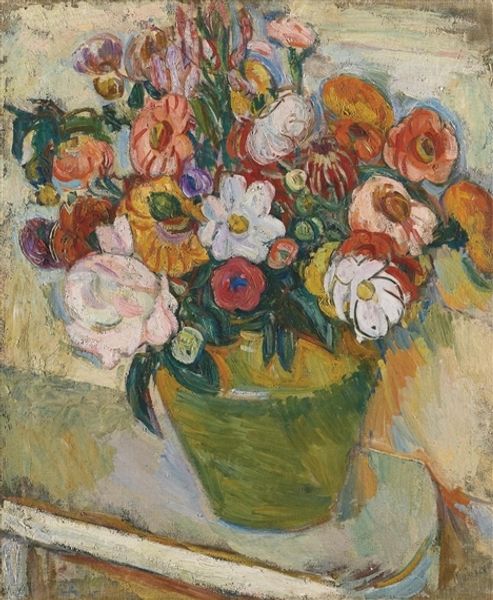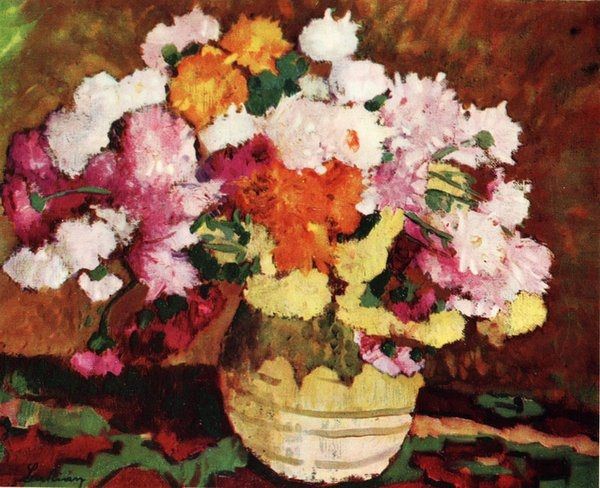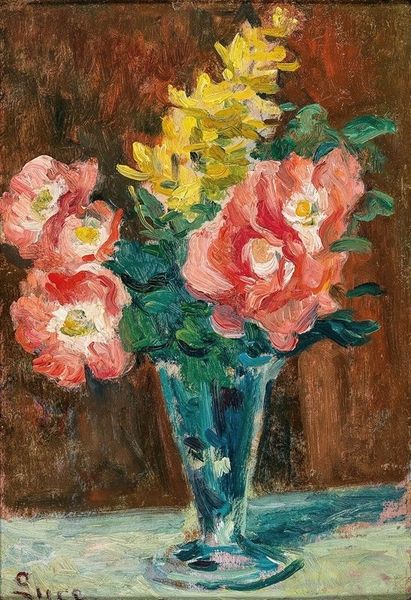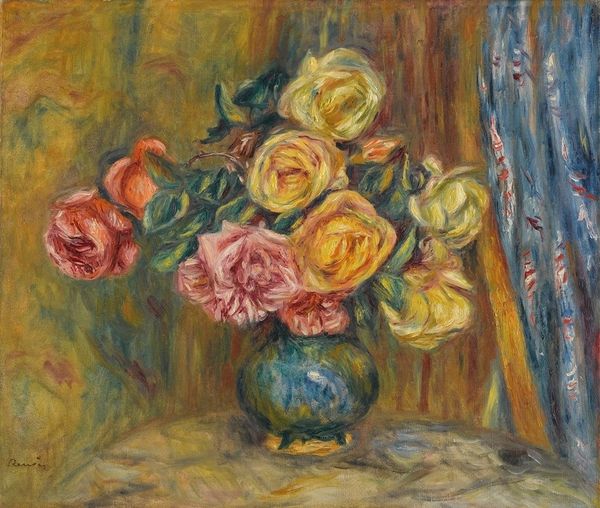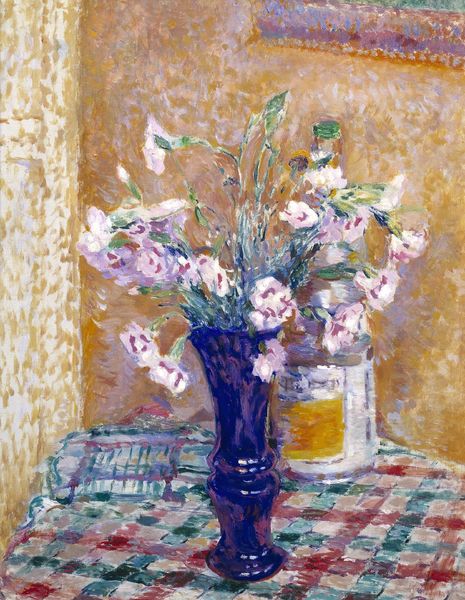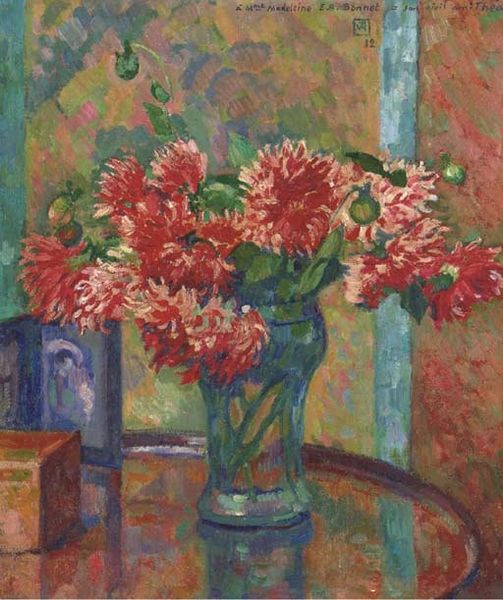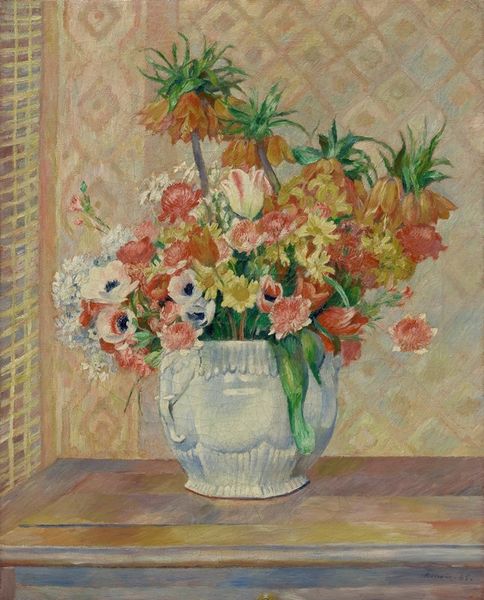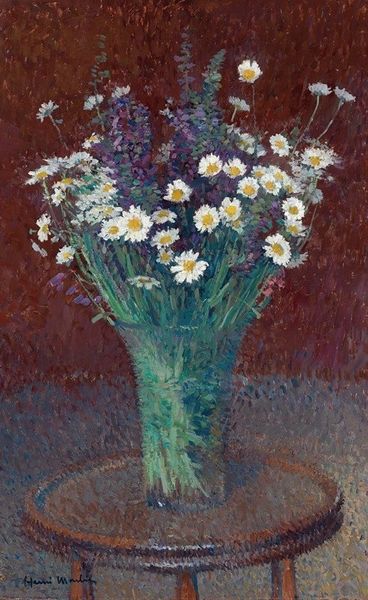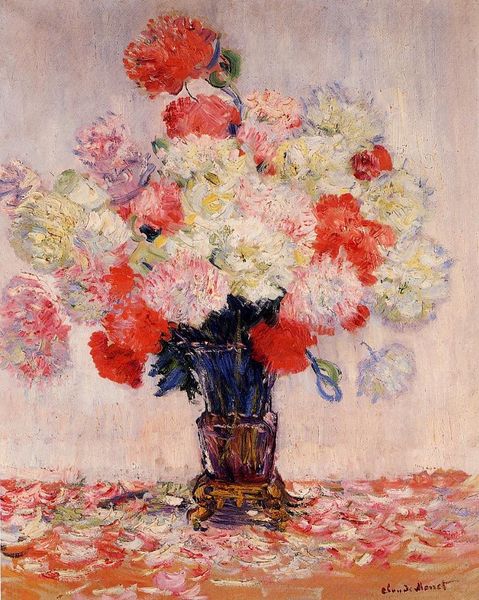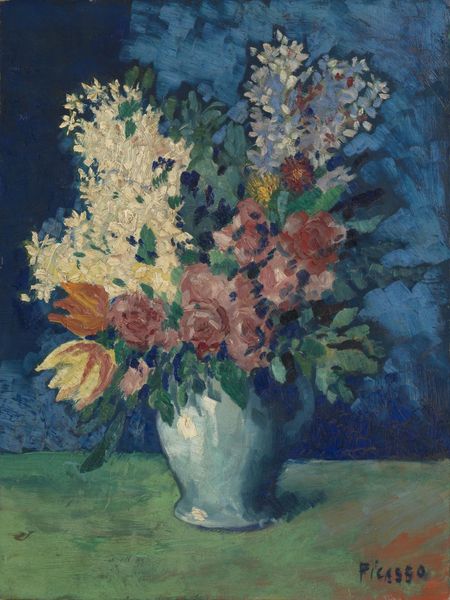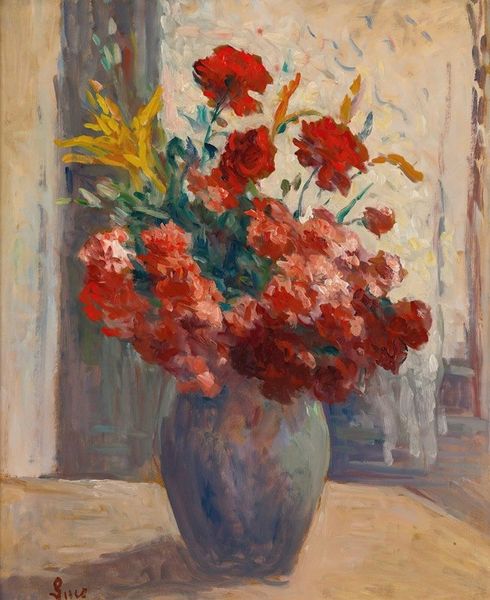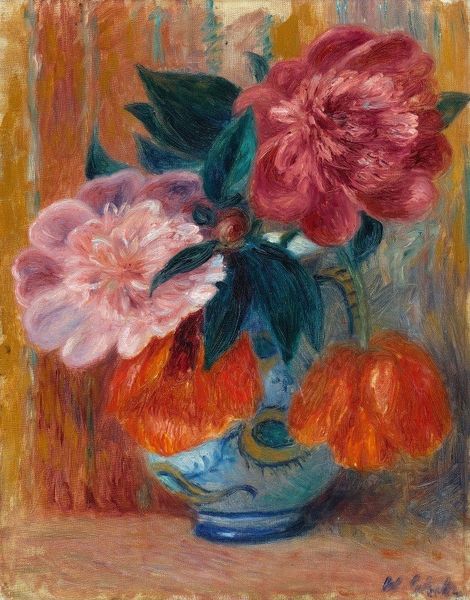
painting, oil-paint, impasto
#
painting
#
oil-paint
#
flower
#
impasto
#
plant
#
post-impressionism
Copyright: Public domain
Curator: Henri Martin's "Vase of Flowers" greets us with a certain restrained joy, wouldn’t you agree? It's like a memory of summer preserved in oil paint. Editor: Yes, the chromatic scale vibrates despite a fairly dark register. I’m struck by the way the surface rejects traditional smooth blending for this almost mosaic-like touch of the impasto. See how each dab exists as a discrete mark and lends itself well to expressing an impression of color? Curator: Absolutely. The broken color technique serves to create the impression of movement, light shimmering across petals and the reflecting light off of glass, almost hinting at the transience of beauty, mortality. It has roots in older vanitas traditions where floral arrangements evoked similar concepts, albeit often less subtly. Editor: Tell me, in that light, is the artist making a comment on form and artifice in nature as well? Do you notice how, through color, the organic blends seamlessly with the very artificial backdrop, to become just one tapestry? The very absence of date is suggestive, no? It abstracts this still-life from specificity, universalizes. Curator: I'd say there's a tension, too. The ordered form of the vase clashes in a way with the riotous bloom it tries to contain. I read this painting as less concerned with artificiality, and more in presenting natural processes through these carefully-crafted forms, to capture their ephemeral nature in tangible shape and paint. In it, the flower becomes the image and vice-versa. Editor: Perhaps we’re each responding to the dynamic balance. I tend to agree with you that each object carries weight within Martin’s personal vocabulary—there are these dialogues emerging that he is inviting. The whole then carries more meaning beyond its mere representation. Curator: Right. The composition makes me ponder our relationship to beauty and the cycles that mark human life. It's evocative; I will carry the sense of fleeting moments onward as I look at my surroundings now. Editor: And, for me, the chromatic organization gives way to many interpretations of the flower and how paint comes into its own to exist for paint’s sake. A welcome paradox!
Comments
No comments
Be the first to comment and join the conversation on the ultimate creative platform.

